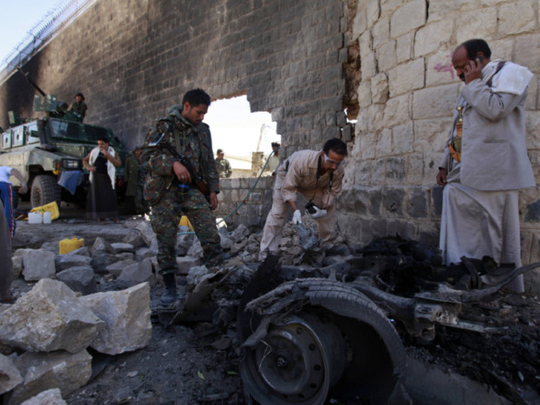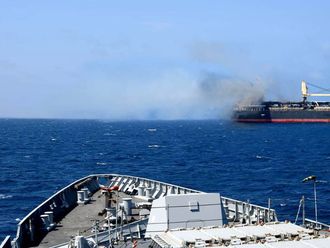
Sana’a: Eleven people were killed when attackers mounted a bomb, grenade and gun assault on the main prison in Yemen’s capital on Thursday to free inmates, security sources and witnesses said.
Explosions and gunfire could be heard several kilometres away from the prison in northern Sana’a, which has Al Qaida members among its inmates. The biggest explosion rattled windows in the area.
“A terrorist group attacked the central prison,” an Interior Ministry official said, according to comments published by the state news agency, adding there had been a car bomb followed by a gun attack on the facility.
“Guards managed to confront the terrorists and forced them to flee,” the report said.
Eleven people were killed, a security source said. The Interior Ministry official said seven guards were killed and four wounded, while 29 inmates, including 19 jailed for terrorism-related crimes, escaped in the chaos.
The ministry released the names of the escapees and asked citizens to report any information to help capture them.
No one claimed responsibility for the attack, but Yemen is grappling with a growing threat from one of Al Qaida’s most active wings, which has killed hundreds of people in assaults on state and military facilities in the past two years.
Some Yemeni news websites said Al Qaida was behind the attack.
Police sealed off the road to the airport, which runs through the neighbourhood where the prison is located, and thick smoke was seen rising above the area.
In October, security forces foiled an attempt by some 300 Al Qaida inmates to escape after they mutinied in another Sana’a prison.
A number of guards and inmates were wounded in that incident, but none was killed.
AQAP chief Nasser Al Wuhaishi vowed in August last year to free incarcerated members of his group.
Al Wuhaishi himself escaped in February 2006 from the same Sana’a prison attacked on Thursday with 22 other members of AQAP.
He was named the group’s leader a year later.
They broke out through a 44-metre tunnel they had dug between a cell and a nearby mosque.
AQAP took advantage of the weakening of the central government in Sana’a after a popular uprising in 2011 forced president Ali Abdullah Saleh from power early the following year.
Earlier on Thursday, a British teacher was reported missing in Sana’a in what a Yemeni security source suggested could have been a kidnapping. The abduction of foreigners in Yemen is common.
The US ally, with a population of 25 million, is trying to end nearly three years of political unrest, which began when mass protests erupted in 2011 against Ali Abdullah Saleh, the president of 33 years, who stepped down.
Interim President Abd Rabbo Mansour Hadi has been facing other challenges in trying to restore stability to Yemen, which shares a long and porous border with top world oil exporter Saudi Arabia.
Yemen is also trying to deal with demands by southern separatists for independence and to quell rebels from Al Houthi movement, which has been on an offensive to extend its control over the north.












